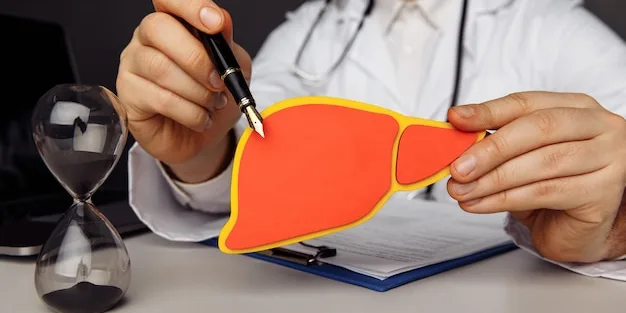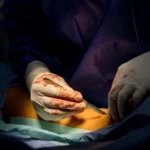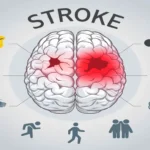Scoliosis and Spinal Deformity: Treatment Options Available in Bangladesh
A straight spine is essential for balance, movement, and a pain-free life. But for many in Bangladesh, scoliosis and other spinal deformities disrupt this alignment—causing chronic discomfort, postural issues, and sometimes even breathing difficulties.
Scoliosis is more than just a curved spine. Left untreated, it can severely impact a person’s physical function, self-esteem, and overall health. Fortunately, modern treatments—including both non-surgical and surgical options—are now available in Bangladesh through experts like Professor Dr. Md. Shafiul Alam, a leading spine surgeon in Bangladesh with deep experience in scoliosis treatment in Dhaka.
Let’s explore what scoliosis is, how to detect it early, and the best ways to correct spinal deformities safely and effectively.
Understanding Scoliosis and Spinal Deformities
What Is Scoliosis?
Scoliosis is a condition where the spine curves sideways, forming an “S” or “C” shape. It most often develops during the growth spurt before puberty, but it can also appear in adults due to degeneration, injuries, or other conditions.
The main types of scoliosis include:
- Idiopathic Scoliosis – no clear cause (most common in adolescents)
- Congenital Scoliosis – due to spinal malformation at birth
- Neuromuscular Scoliosis – associated with conditions like cerebral palsy or muscular dystrophy
Other Spinal Deformities:
- Kyphosis – excessive outward rounding of the upper back
- Lordosis – abnormal inward curve in the lower back
- Flat Back Syndrome – loss of natural lumbar curve, causing imbalance
These conditions not only alter appearance but may also impair movement, breathing, and nerve function if left untreated.
Symptoms and Warning Signs
Watch for these signs—especially in children and adolescents:
- Uneven shoulders or hips
- Visible curve in the back when bending forward
- One shoulder blade sticking out more than the other
- Back pain, fatigue, or stiffness
- Difficulty standing upright or walking long distances
- Breathing difficulty in advanced cases
Early detection is crucial for preventing progression and minimizing long-term complications.
Diagnosis and Evaluation Process
If scoliosis or spinal deformity is suspected, Professor Dr. Md. Shafiul Alam begins with:
- Clinical examination – spine flexibility, posture analysis, limb length check
- Imaging tests – X-rays to measure the curve (Cobb angle), MRI or CT scans for detailed evaluation
- Functional assessments – balance, gait, and neurological exams
This comprehensive approach ensures an accurate diagnosis and the right treatment plan.
Non-Surgical Treatment Options in Bangladesh
Not every case of scoliosis requires surgery. In mild to moderate cases, the following are recommended:
- Physiotherapy – tailored exercises to strengthen back muscles and correct posture
- Bracing – for children and teens with progressive curves (especially during growth)
- Postural training – ergonomic advice for sitting, sleeping, and daily activities
- Regular monitoring – to track curve progression and avoid unnecessary surgery
These conservative treatments are effective when started early—especially under the supervision of a qualified spine surgeon in Bangladesh like Dr. Alam.
When Surgery Is Needed for Spinal Deformity Correction
Surgical intervention becomes necessary when:
- The spinal curve progresses rapidly (above 40–50 degrees)
- Pain, mobility issues, or breathing problems develop
- Bracing and physiotherapy fail to stop the curve
- The patient experiences nerve compression or deformity-related disability
At this point, Dr. Alam may recommend spinal curvature surgery to correct and stabilize the spine.
Espinal Curvature Surgery – What to Expect
Spinal deformity correction surgery is advanced and highly effective, especially when performed by specialists like Dr. Shafiul Alam. Key procedures include:
- Spinal Fusion – metal rods, screws, and bone grafts are used to align and permanently join spinal bones
- Osteotomy – bone cutting and realignment for severe curves
- Vertebral column resection – for rigid or complex deformities
Advantages of Surgery:
- Restores proper posture
- Reduces pain and improves mobility
- Prevents further curvature progression
- Boosts confidence and quality of life
Most patients recover well and regain full function with proper rehabilitation.
Recovery and Rehabilitation
Recovery varies by case, but generally includes:
- Hospital stay: 3–7 days depending on surgery type
- Physical therapy: starts within 2 weeks
- Full recovery: 3–6 months with exercise and follow-ups
- Lifestyle guidance: avoid heavy lifting, twisting, or poor posture
Dr. Alam’s post-surgical care includes rehab planning, spine health education, and long-term monitoring to prevent future complications.
Why Choose Professor Dr. Md. Shafiul Alam for Scoliosis Treatment in Dhaka
- Decades of experience treating complex spinal deformities
- Expert in minimally invasive and reconstructive spine surgery
- Trusted by patients across Bangladesh for ethical and evidence-based care
- Clear communication and personalized treatment planning
- Committed to long-term patient success—not just quick fixes
Whether you’re a young student or an aging adult, Dr. Alam tailors your care for safe, lasting results.
FAQs on Scoliosis Treatment in Bangladesh
Q: Can scoliosis be treated without surgery?
Yes—especially when detected early. Bracing and physiotherapy are effective for mild curves.
Q: What age is best for scoliosis correction?
Early teens (11–15 years) is ideal, but adults can benefit too with the right treatment plan.
Q: Is scoliosis surgery risky?
When performed by an experienced spine surgeon, the risks are low and outcomes are excellent.
Q: Is treatment available outside of Dhaka?
Dr. Alam primarily treats patients in Dhaka but accepts referrals from across the country.
Related Reading for Spine Care
Looking to Learn More? Discover expert neurological and spinal care right here in Bangladesh:





